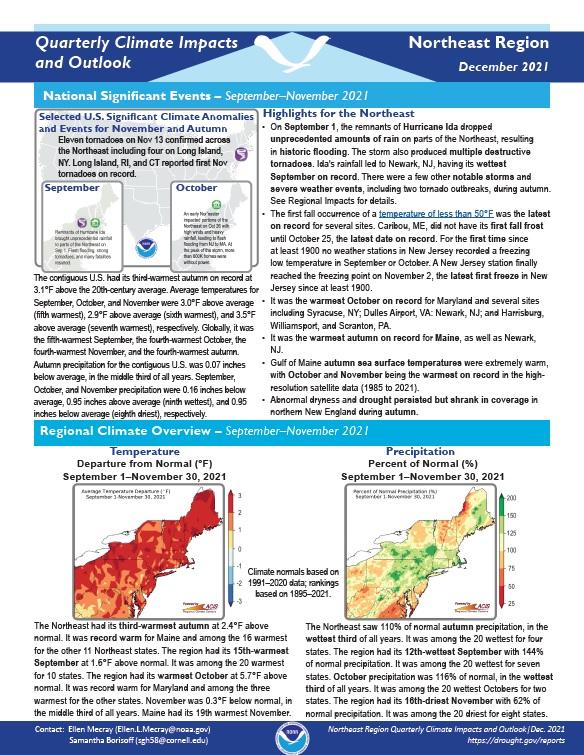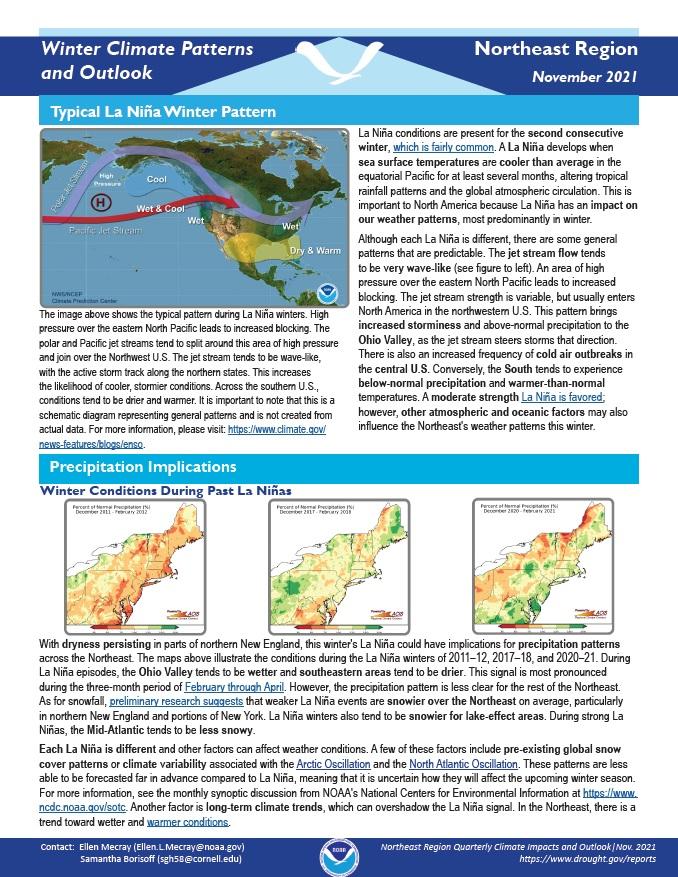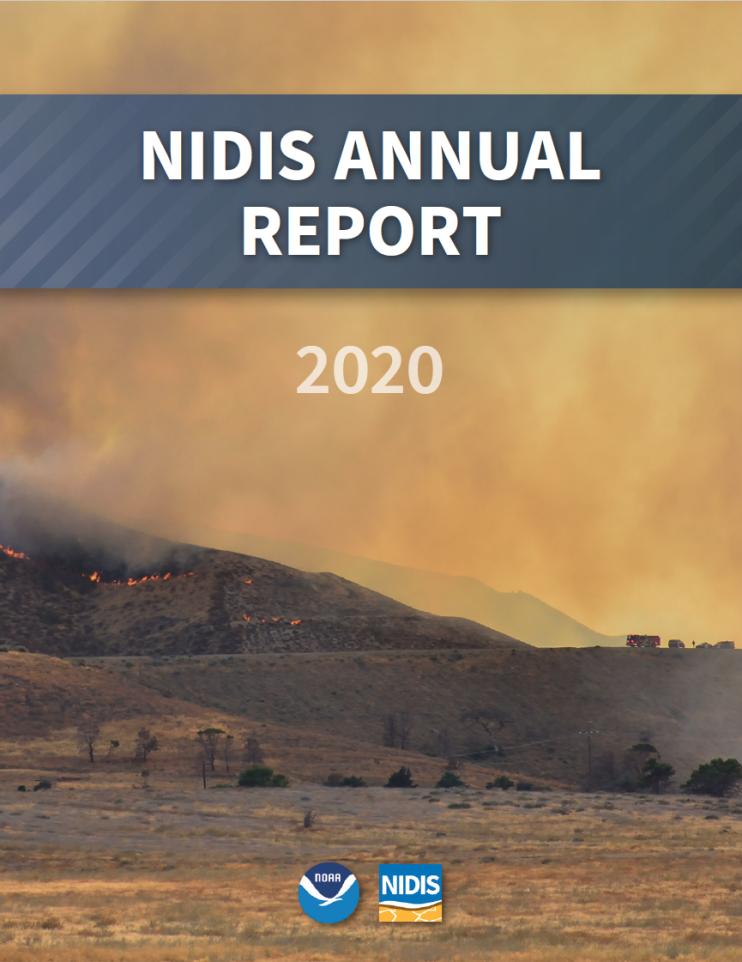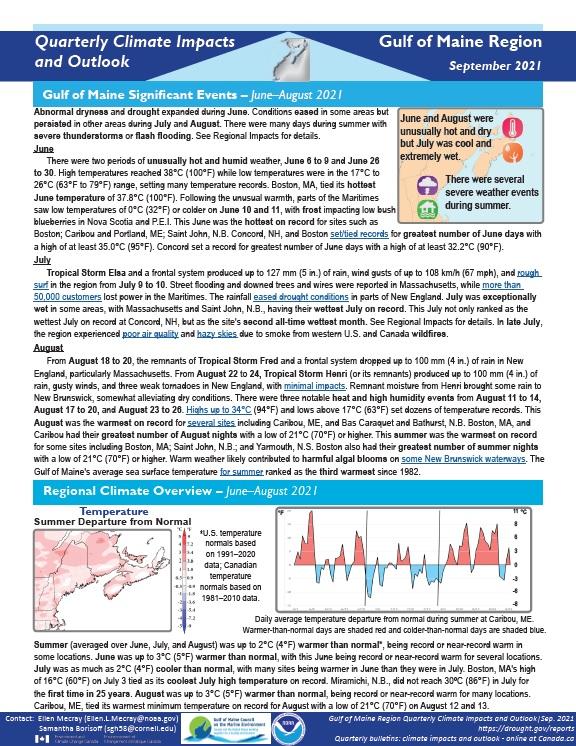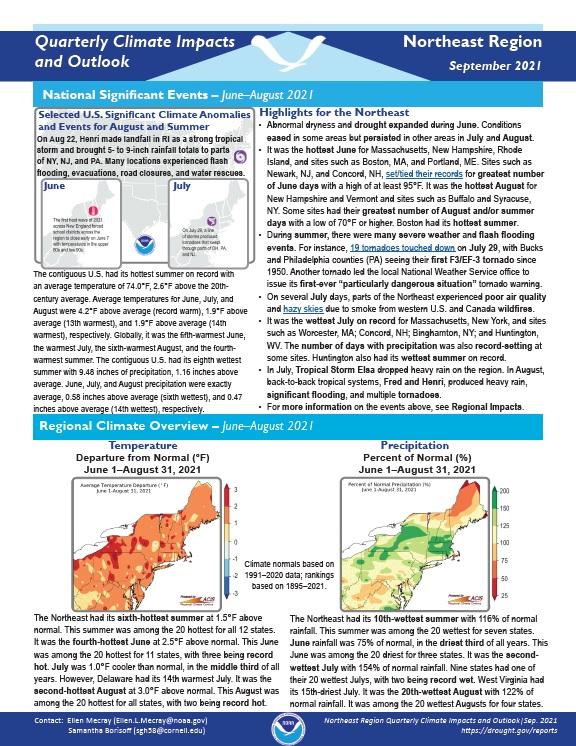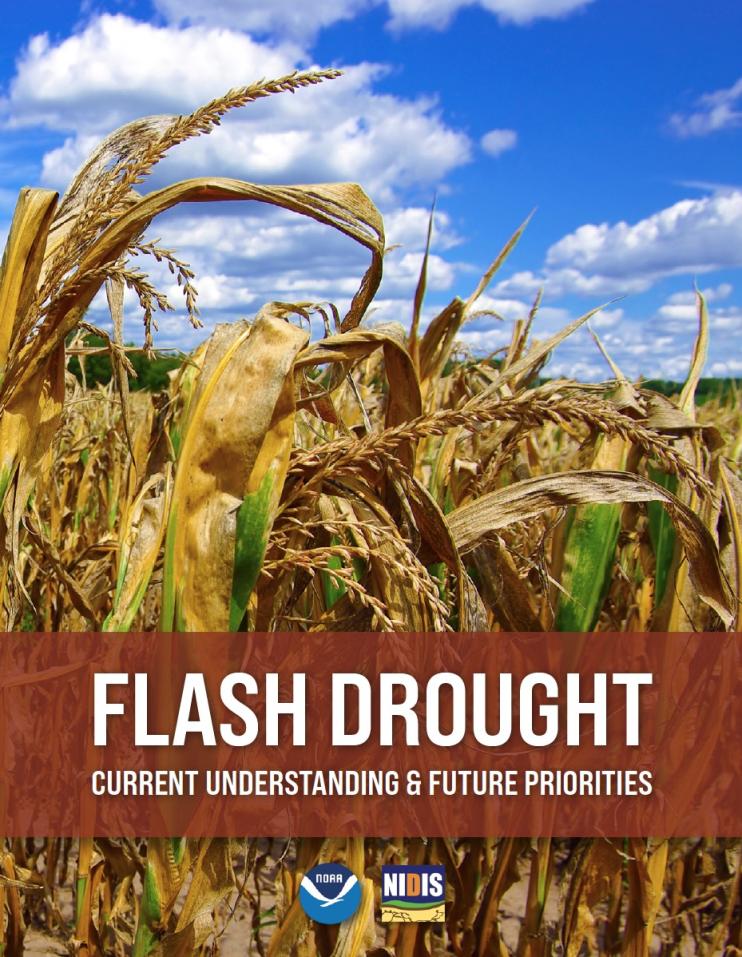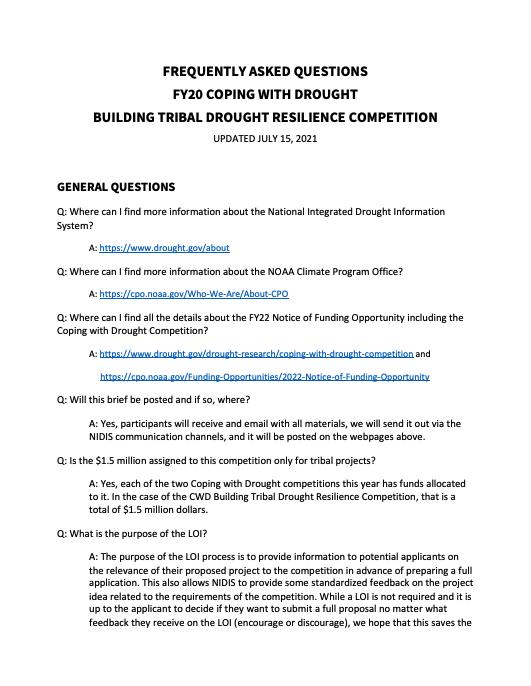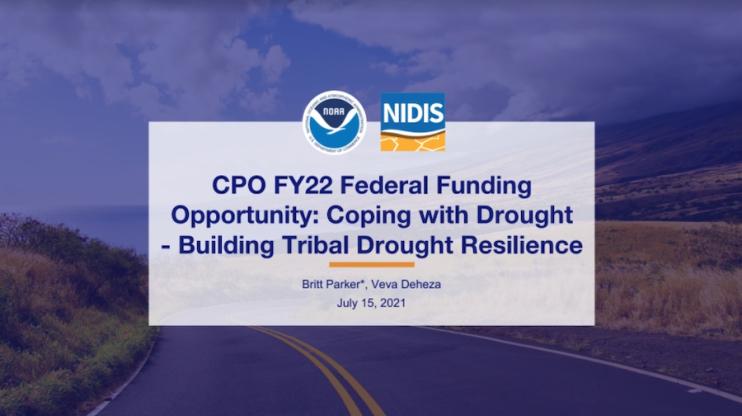Quarterly Climate Impacts and Outlook for the Northeast Region for September - November 2021. Dated December 2021.
The Northeast had its third-warmest autumn at 2.4°F above normal. It was record warm for Maine and among the 16 warmest for the other 11 Northeast states. The Northeast saw 110% of normal autumn precipitation, in the wettest third of all years. It was among the 20 wettest for four states.
This handout provides information on the typical La Niña winter pattern; the precipitation implications; other factors; and the winter outlook for the Northeast region. Updated November 2021.
NOAA’s Regional Climate Services Program created these outlooks to inform the public about climate impacts within their respective regions. Each regional report contains easy-to-understand language, and anyone can access them through the Drought Portal.
The National Integrated Drought Information System (NIDIS) is pleased to share our 2020 Annual Report to provide insight into the many accomplishments of the program over the previous year and the opportunities that lie ahead. The year 2020 was exceptionally difficult for people worldwide, as the COVID-19 pandemic ravaged the globe and altered almost every facet of daily life. Not only was 2020 a significant drought year for the United States, it also brought record-breaking heat and devastating wildfires.
Quarterly Climate Impacts and Outlook for the Gulf of Maine Region for March - May 2021. Dated June 2021.
Summer was up to 2°C (4°F) warmer than normal, being record or near-record warm in some locations. Summer precipitation ranged from 50% of normal to 200% of normal.
Quarterly Climate Impacts and Outlook for the Northeast Region for June - August 2021. Dated September 2021.
The Northeast had its sixth-hottest summer at 1.5°F above normal. This summer was among the 20 hottest for all 12 states. The Northeast had its 10th-wettest summer with 116% of normal rainfall. This summer was among the 20 wettest for seven states.
Droughts are often thought of as slow-moving natural hazards. However, some serious droughts occur with such rapid onset that it seems as if they appear in a “flash,” rendering them and their consequences hard to predict and prepare for. These flash droughts can have substantial agricultural and economic consequences, including billions of dollars in losses.
For Fiscal Year (FY) 2022, the National Integrated Drought Information System (NIDIS) is hosting a research competition, Coping with Drought: Building Tribal Drought Resilience. Applications should be developed by or in full partnership with tribal nations to fund the implementation of actions—together with research on those actions—to build drought resilience contained in existing plans and strategies. Plans may include, but are not limited to drought contingency plans; drought, water, or natural resource plans; agricultural resource management plans; or climate adaptation plans.
For Fiscal Year (FY) 2022, the National Integrated Drought Information System (NIDIS) is hosting a research competition, Coping with Drought: Building Tribal Drought Resilience. Applications should be developed by or in full partnership with tribal nations to fund the implementation of actions—together with research on those actions—to build drought resilience contained in existing plans and strategies. Plans may include, but are not limited to drought contingency plans; drought, water, or natural resource plans; agricultural resource management plans; or climate adaptation plans.


